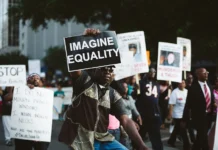A lot of attention in the coming months will be focussed on the role of social media in spreading disinformation which, if not a cause of the riots, has certainly aggravated them. This was the case following the unrest in Leicester (where I live and work) in 2022 where analyses showed that vast amounts of false information came from India and Pakistan.
Some of this was due to ignorance – people thousands of miles away commenting on incidents they knew nothing about – while some of it was much more malicious.
Combating the spread of disinformation is hard, and technological solutions are not straightforward. Social media platforms host billions of users who generate vast amounts of content every second.
Differentiating between misinformation (false information shared without harmful intent) and disinformation (false information shared with the intent to deceive) is complex. Automated systems often struggle with the nuances of language, context, and intent.
Disinformation tactics also constantly evolve, with bad actors using sophisticated methods to evade detection, such as using coded language, memes, or video content that is harder to analyse than text.
This is not to excuse the firms who run these platforms – there is certainly more that they can do. But they can’t be expected to provide the whole answer.
Where technological solutions fail us, perhaps the answer is to encourage a change in user behaviour. I’ve been fascinated to discover that all three of my children (late teens, early twenties) have recently deleted some social media accounts – in part because of frustrations over adverts, but also because they realised for themselves (without any persuasion from their parents) that their use of such platforms was affecting their mental health.
I doubt my children are alone in coming to this conclusion, and it maybe that the coming decade will see a significant shift in user behaviour which in turn will reshape the platforms.
In the meantime, it is important that we take the time to examine our own worldview, and how it is formed. Confirmation bias is a well-documented psychological phenomenon, as is motivated reasoning and cognitive dissonance – all of them factors in our receptivity to information.
More recently, and still contested, is the backfire effect: the tendency for some people to believe even more in misinformation after they have seen an evidence-based correction. The phenomena that shape our perceptions are messy, counterintuitive, and complex.
However, in the midst of all this complexity, there is one very effective approach to changing our worldview and the way we interpret new information.
Put simply, it is personal encounter – meeting someone who is very different to us and engaging with them. Such encounters, when genuine, engage every part of our being and affect us at a very deep level.
There are some lovely examples of this online – footage of immigrants sitting down with far-right sympathisers, both of them telling their stories, growing in understanding of all that has shaped their lives, hopes and fears. At its heart, this is about the deep human longing to be seen, to be heard, to tell our story and to feel that we are understood.
As a Christian, this is the basis of my faith – personal encounter with God. And love of God sits with love of neighbour – the story of the Good Samaritan, for example, is all about an unexpected encounter which led to a change in worldview.
But storytelling is not enough – we also need action. The examples we have seen in the last couple of weeks of diverse communities coming together to clear up and rebuild after the riots have been powerful. It’s the exact kind of practical step the government should be incentivising.
Since the unrest in Leicester in 2022, we’ve started to use the language of interculturalism to describe partnerships between businesses, charities and local authorities working to bring people together across differences.
This language recognises that everyone has something to give, and everyone has something to receive. It doesn’t have to be a zero-sum narrative of some people prospering at the expense of others. All of us can prosper together if we pay attention to power dynamics and reflect carefully on our interactions.
This may all sound very “old school”, especially when compared with the technological challenges of countering disinformation. And to be clear, I am suggesting we need both – the one will not work effectively without the other.
But I don’t believe we will ever get beyond the need for face-to-face encounters. Despite social media changing the way we interact with one another, genuine, physical interaction is more important now than it ever has been.
Those face-to-face encounters help foster empathy, strengthen our sense of community, and reveal to us the truth about our neighbours – and there’s no amount of disinformation that can counter that.



